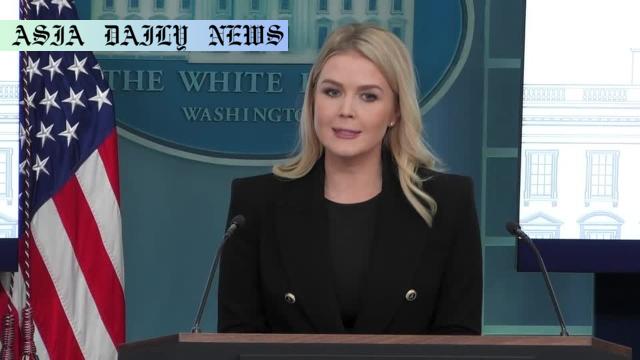Gaza Reconstruction: President Trump’s plan involves U.S. led efforts for rebuilding the region while temporarily relocating residents.
US President Trump suggests America take ownership of Gaza for peace and reconstruction.
Temporary relocation of Gaza residents proposed during rebuilding efforts.
No current commitment to deploying troops or U.S. funding the reconstruction.

Overview of Trump’s Gaza Plan
Recent statements from U.S. President Donald Trump regarding the future of Gaza have generated significant global attention. His proposal to take ownership of the Gaza Strip, temporarily relocate its residents, and lead reconstruction efforts was described by the White House as a “bold plan for peace.” While presented as an initiative for stability, the plan has also raised questions about the logistical, ethical, and political implications of such a measure.
Temporary Relocation of Gaza Residents
Key to President Trump’s proposal is the temporary relocation of Gaza’s residents. White House Press Secretary Karoline Leavitt emphasized that the President’s intention is to create a peaceful and stable living environment for the people of Gaza by rebuilding the area first. However, she clarified the relocation would only be temporary during the reconstruction phase, ensuring that residents could return to a rebuilt and functioning Gaza in the future.
Reconstruction Efforts Led by the United States
The plan outlines a robust U.S.-led initiative to not only remove debris and munitions from the region but also reconstruct homes, businesses, and critical infrastructure. Secretary of State Marco Rubio highlighted that the proposal demonstrates America’s willingness to take responsibility for building a sustainable future for Gaza. Rubio described it as a “generous” move, acknowledging the United States’ capacity to spearhead such an effort while working alongside regional allies.
No Commitment to Troops or U.S. Funding
The White House has explicitly stated that President Trump has not committed to deploying U.S. troops to Gaza to implement the plan. Additionally, he has indicated that the reconstruction would not be funded by American tax dollars, though it remains unclear which international parties would cover the costs of the ambitious redevelopment strategy.
International and Regional Collaboration
For the success of this plan, international and regional collaboration will be crucial. Leavitt stated that the President and his team are actively consulting with allies in the region to discuss next steps. This approach aims to foster unity and shared responsibility among neighboring countries and international bodies, ensuring stability in the region during and after the rebuilding process.
Potential Concerns and Criticism
While presented as a peace initiative, Trump’s Gaza plan has not been without controversy. Critics have raised concerns about the feasibility of temporarily relocating Gaza’s densely populated residents, the long-term effects on displaced individuals, and the potential perception of U.S. ownership of the region being a form of neocolonialism. Additionally, questions remain about whether the residents of Gaza and regional governments will support or resist the plan.
The Road Ahead
President Trump’s proposal represents one of the most ambitious plans for Gaza in recent history. If executed with transparency, collaboration, and respect for the rights of Gaza’s residents, it could pave the way for a stable and prosperous future. However, much will depend on how details of the plan are finalized, including the financial backing, operational logistics, and the approval of concerned stakeholders.
As efforts to address the complex challenges in Gaza continue, the global community will watch closely to see whether Trump’s bold vision translates into tangible peace and transformation for one of the world’s most troubled regions.



Commentary
A Bold Initiative Worth Analyzing
President Trump’s proposal for Gaza is undeniably bold and ambitious, aiming to tackle the long-standing challenges in a region that has seen years of conflict and devastation. While the notion of the United States leading reconstruction efforts demonstrates a readiness to contribute to regional stability, the logistical and ethical considerations of temporarily relocating residents are complex. Displacement, even temporarily, can have far-reaching psychological and social consequences for those affected.
Potential Pros and International Unity
However, there are positive aspects to the plan that deserve attention. A properly executed reconstruction could provide Gaza’s people with improved infrastructure, housing, and employment opportunities. Moreover, the emphasis on international collaboration is commendable, as it ensures that no single country bears the entire burden. This could also spark new alliances and greater understanding among the stakeholders involved, promoting long-term cooperation.
Concerns About Feasibility and Ethics
That said, the proposal raises some valid concerns. Relocating residents, even temporarily, is a mammoth task that requires meticulous planning to avoid further human suffering. Additionally, the lack of direct U.S. financial commitment leaves questions about who will bear the cost. Without adequately addressing such issues, the plan risks appearing performative rather than substantive.
Final Thoughts
In conclusion, while Trump’s plan might be controversial, it has opened the door for renewed dialogue about Gaza’s future. The global community should monitor the execution of this vision closely to ensure it delivers lasting benefits to the people of Gaza without compromising their autonomy or rights.